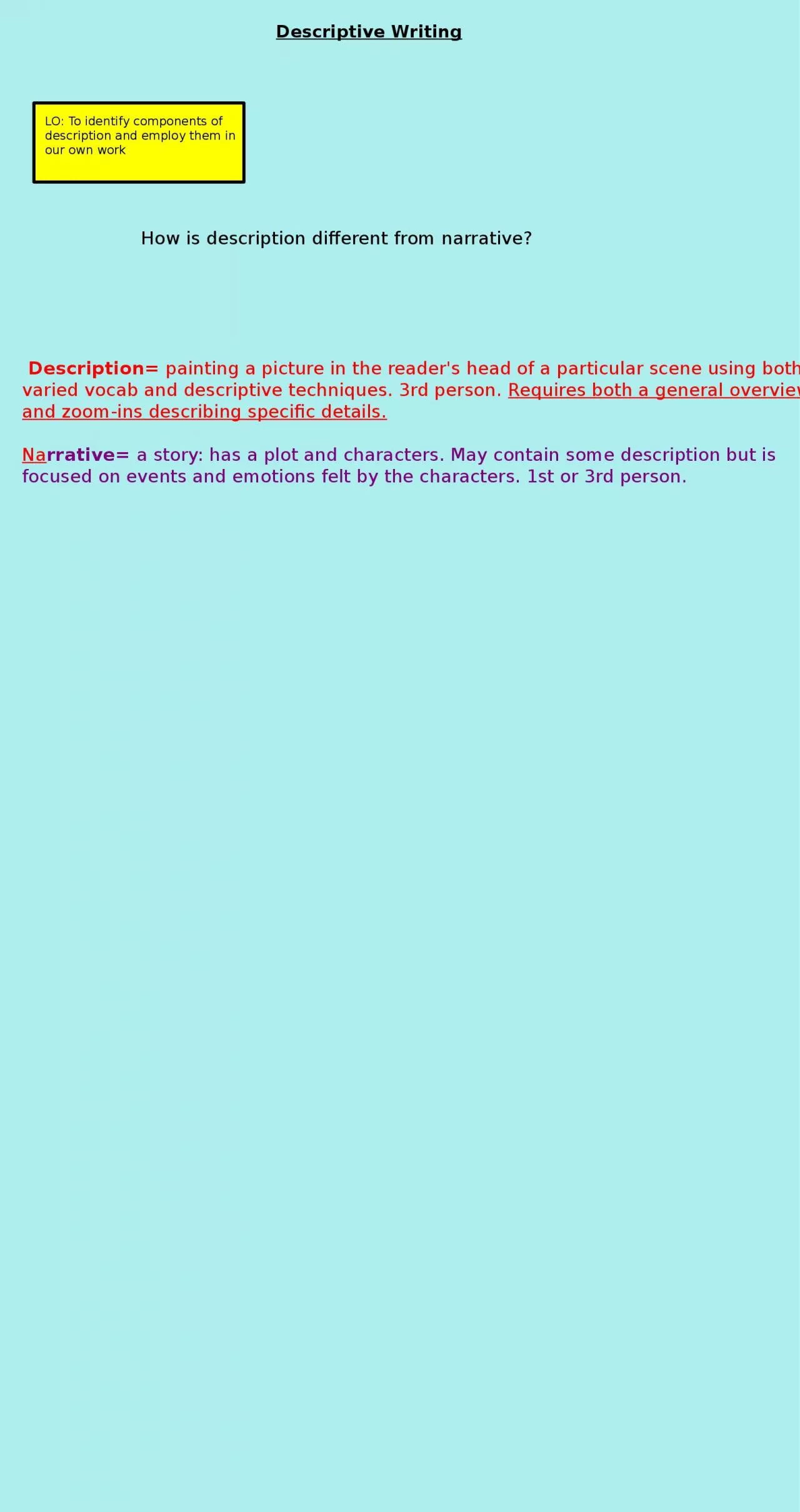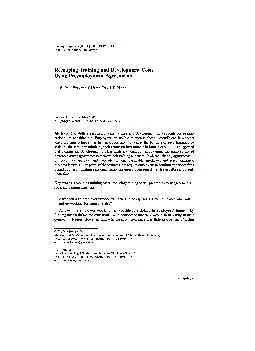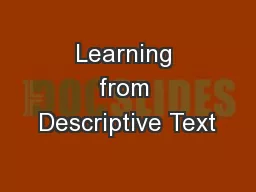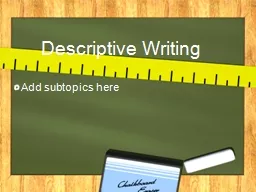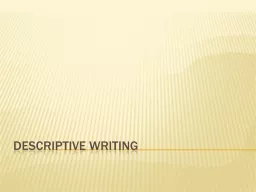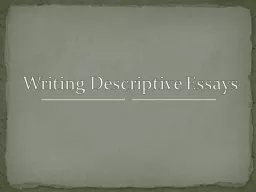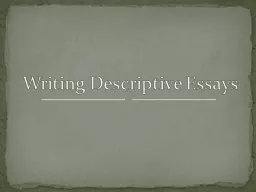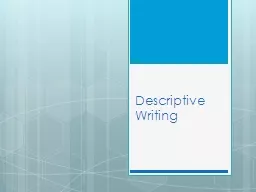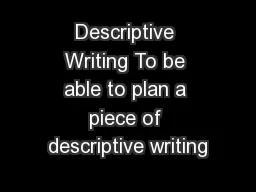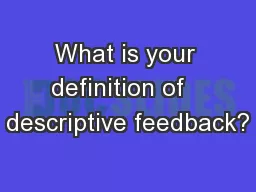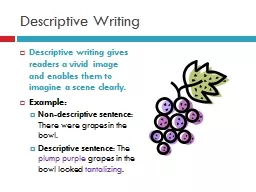PPT-Descriptive Writing LO: To identify components of description and employ them in
Author : kylie | Published Date : 2023-06-21
How is description different from narrative Description painting a picture in the readers head of a particular scene using both varied vocab and descriptive techniques
Presentation Embed Code
Download Presentation
Download Presentation The PPT/PDF document "Descriptive Writing LO: To identify comp..." is the property of its rightful owner. Permission is granted to download and print the materials on this website for personal, non-commercial use only, and to display it on your personal computer provided you do not modify the materials and that you retain all copyright notices contained in the materials. By downloading content from our website, you accept the terms of this agreement.
Descriptive Writing LO: To identify components of description and employ them in: Transcript
Download Rules Of Document
"Descriptive Writing LO: To identify components
of description and employ
them in"The content belongs to its owner. You may download and print it for personal use, without modification, and keep all copyright notices. By downloading, you agree to these terms.
Related Documents

